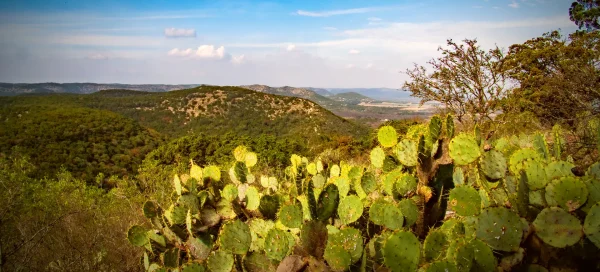Overview
The Short-beaked Echidna, known scientifically as Tachyglossus aculeatus, is a unique mammal native to Australia, Tasmania, and New Guinea. It is one of the only four extant species of echidnas and one of the five species of monotremes, the only mammals that lay eggs. Characterized by its spiny coat, short legs, and distinctive snout, the echidna is well-adapted to various environments. Despite its porcupine-like appearance, it is more closely related to the platypus.
This animal is known for its solitary and elusive nature, making it a rare sight in the wild. Echidnas have a specialized diet, primarily feeding on ants and termites. They use their long, sticky tongues to capture prey. Their strong claws and stout limbs make them excellent diggers, aiding in foraging and shelter.
Short-beaked Echidnas possess a remarkable adaptation for electroreception, allowing them to detect electrical signals emitted by the muscles of their prey. This ability and a keen sense of smell make them effective foragers. Their low metabolic rate and tendency to conserve energy also contribute to their survival in various habitats.
Taxonomy
Kingdom
Phylum
Class
Order
Family
Genus
Species
Sub Species
Type
Physical Description:
The Short-beaked Echidna is known for its spines and modified hairs made of keratin. These spines cover the upper part of its body, providing defense against predators. The echidna’s skin is black or brown and has a distinctive snout used for foraging. Its small eyes and ears are adaptations to its burrowing lifestyle.
It has a robust, rounded body with short, strong limbs equipped with large claws for digging. The echidna’s snout houses a long, sticky tongue that can extend up to 7 inches and is used to feed ants and termites. Males have a spur on their hind legs, but unlike the platypus, it is not venomous.

Lifespan: Wild: ~10 Years || Captivity: ~40 Years

Weight: Male: 5.5-16.5 lbs (2.5-7.5 kg) || Female: 4.4-13.2 lbs (2-6 kg)

Length: Male: 12-18 inches (30-45 cm) || Female: 12-18 inches (30-45 cm)

Top Speed: 2.5 mph (4 km/h)
Characteristic:
Native Habitat:
Short-beaked Echidnas inhabit many environments, from arid deserts to snow-covered mountains. They are commonly found in forests, grasslands, and even urban areas across Australia, Tasmania, and New Guinea. Their adaptability to different habitats is a key factor in their survival.
Their burrowing habits provide shelter from extreme temperatures and predators. Echidnas can dig quickly and efficiently, often creating temporary burrows for resting or escaping threats. They also take shelter in logs, crevices, or under vegetation.
Biogeographical Realms:
Countries:
Diet:
Diet & Feeding Habits:
The diet of the Short-beaked Echidna primarily consists of ants and termites. They use their strong forelimbs to break open termite mounds and ant nests. Their long, sticky tongue is adept at capturing small insects. Echidnas do not have teeth; instead, they grind their prey between the base of their mouth and tongue.
Echidnas are known for their ability to consume many ants and termites in a single feeding. They are important for controlling insect populations in their native habitats. Their foraging behavior plays a role in soil aeration and nutrient redistribution. Despite their specialized diet, echidnas can go long periods without food, particularly during harsh weather conditions.
Mating Behavior:
Mating Description:
Short-beaked Echidnas have a unique mating behavior known as the “mating train,” where several males follow a single female in a line. This can last for days until the female is ready to mate. Males have a four-headed penis, but only two heads are used during mating, alternating between each copulation.
The breeding season typically occurs between June and September. After mating, the female lays a leathery egg directly into her pouch. The egg hatches after about 10 days, and the young, called a “puggle,” is carried in the mother’s pouch for up to two months. After leaving the pouch, the puggle remains in a burrow, nursed for several months until weaning.
Reproduction Season:
Birth Type:
Pregnancy Duration:
Female Name:
Male Name:
Baby Name:
Social Structure Description:
Short-beaked Echidnas are solitary animals, coming together only during the breeding season. They have a large home range but do not defend it as a territory. Echidnas are primarily nocturnal or crepuscular, although they can be active during the day in cooler weather.
Social interactions are limited and primarily occur during mating or between mothers and their offspring. Echidnas communicate through various sounds, including grunts and snuffles, and use scent marking to convey information.
Groups:
Conservation Status:
Population Trend:
The Short-beaked Echidna is classified as “Least Concern” by the IUCN, indicating a stable population. They are widespread across their native range and have adapted well to various environments. However, accurate population estimates are challenging due to their secretive nature and solitary habits.
The echidna’s adaptability to different habitats, including urban areas, has contributed to its population stability. Its long lifespan also aids in maintaining population numbers. Although common, echidnas are protected under various conservation laws in their native countries.
Population Threats:
Major threats to the Short-beaked Echidna include habitat loss due to urban development and agricultural expansion. Road mortality is a significant issue, as echidnas often become victims of vehicle collisions. Predation by dogs, foxes, and feral cats also poses a risk.
In some areas, echidnas face bushfires and climate change threats, which can alter their habitats and food sources. However, their ability to survive in diverse environments helps mitigate these threats.
Conservation Efforts:
Conservation efforts for the Short-beaked Echidna primarily focus on habitat protection and reducing road mortality. Protected areas and national parks are crucial in conserving their natural habitats. Wildlife crossings and fencing along roads can help reduce the number of vehicle collisions.
Education and awareness programs about echidnas in urban and rural communities are important for promoting coexistence and conservation. Research on their ecology and behavior aids in developing effective conservation strategies.
Additional Resources:
Fun Facts
- The Short-beaked Echidna is one of the few mammals that lay eggs.
- They have a specialized tongue extending up to 7 inches to capture prey.
- Echidnas have electroreceptors on their snouts to detect electrical signals from insects.
- They can live up to 50 years in the wild, one of the longest lifespans for a mammal.
- The echidna’s spines are modified hairs.
- Males have a unique four-headed penis, but only two heads are used at a time.
- They are capable of rapid burrowing, either to escape predators or to find food.
- Short-beaked Echidnas do not have teeth.
- The baby echidna, called a puggle, is carried in a pouch like a kangaroo.
- They are capable of swimming and often do so to cross rivers or find food.











